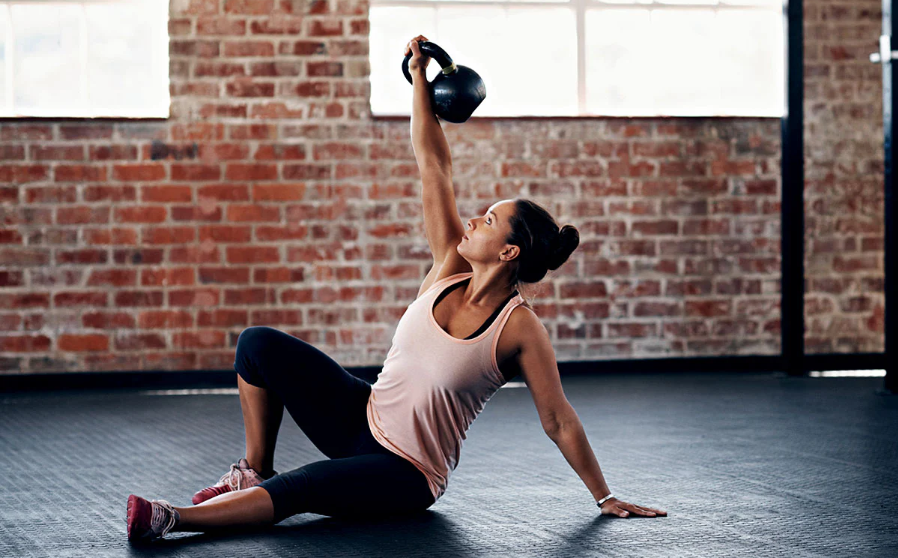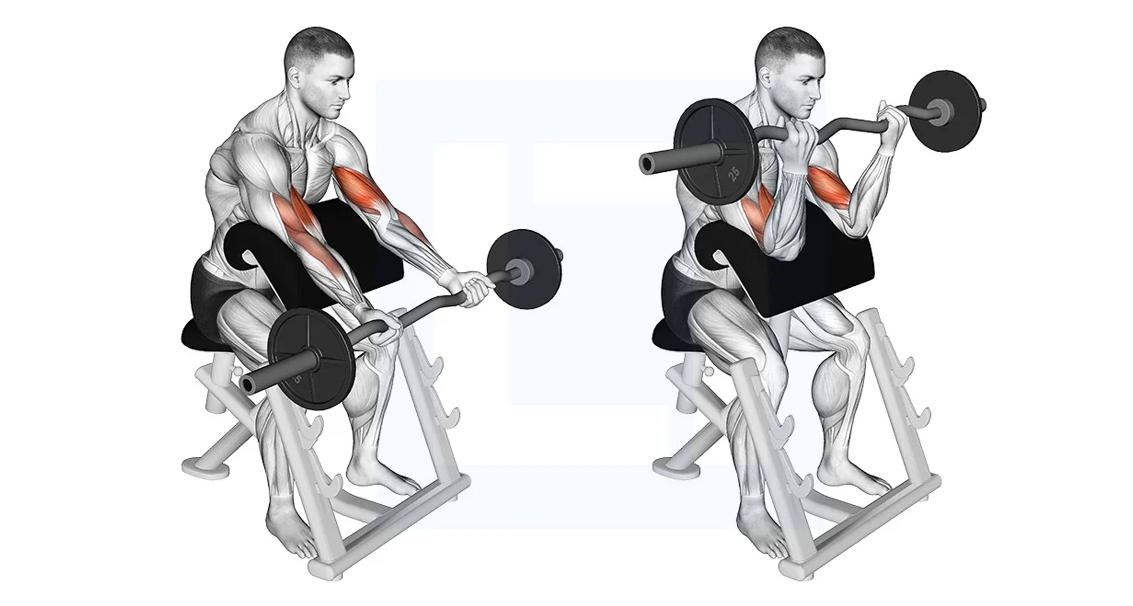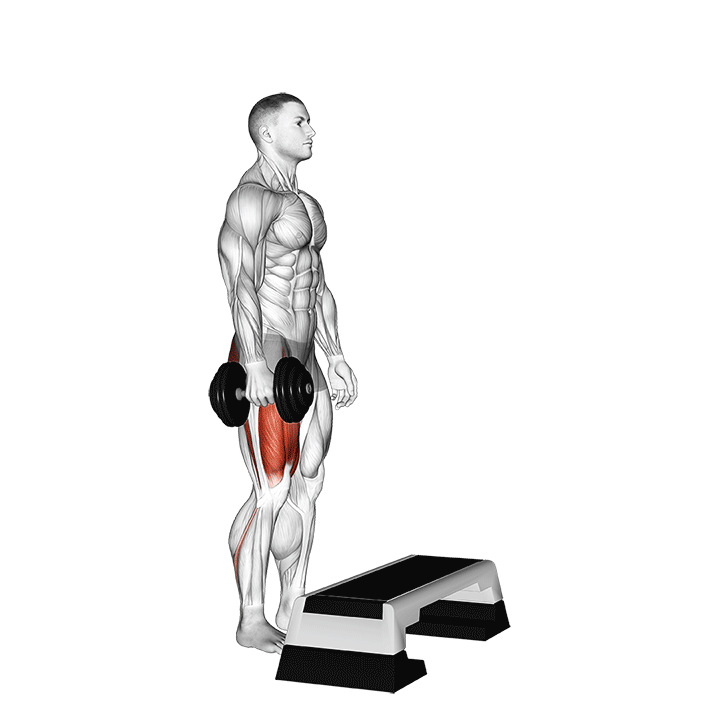The Turkish Get Up (TGU) is widely regarded as one of the most effective exercises for building strength, improving mobility, and enhancing overall functional fitness. By engaging multiple muscle groups—particularly in the core, shoulders, and hips—it helps to develop core stability, coordination, and balance. However, despite its numerous benefits, the Turkish Get Up is a highly technical exercise that requires proper form and technique, and it can be time-consuming to perform correctly. For some, mastering this complex movement can take significant practice, and the overall execution might not always be ideal, especially for those with limited time or mobility restrictions.
Because of these challenges, many kettlebell enthusiasts and athletes seek alternative exercises that provide similar benefits without the steep learning curve or complexity of the Turkish Get Up. Fortunately, there are several excellent exercises that can effectively target the same muscle groups, improve functional movement, and provide strength and stability benefits—without requiring the same level of technical precision or extensive practice.
In this article, we’ll take a closer look at three of the best alternatives to the Turkish Get Up. We will examine their techniques, the benefits they offer, and how to integrate them into your kettlebell workouts to create a more efficient, versatile, and effective training routine.
Why Are People Looking for Turkish Get Up Alternatives?
There are several reasons why individuals might look for alternatives to the Turkish Get Up (TGU). While the TGU is undoubtedly a powerhouse exercise, there are factors that can make it challenging for some people, leading them to explore other options.
1. Time Constraints and Efficiency Concerns
For those with busy schedules, time is often a key factor in determining the structure of their workout. The Turkish Get Up requires multiple steps and transitions, making it a time-consuming exercise. While highly effective, it may not fit into a streamlined, time-efficient routine for people who are looking to maximize their workout in a shorter period. Finding alternatives that replicate the benefits of the TGU but with less time commitment is a common goal for many.
2. Difficulty Mastering the Complex Turkish Get Up Technique
The Turkish Get Up is a movement that requires a great deal of technical skill and body awareness. Beginners or individuals who haven’t yet mastered the full range of motion may struggle with the complexity of the technique. The need for proper form, balance, and stability can make the exercise frustrating for some, particularly when dealing with the overhead kettlebell position. For these individuals, finding simpler, more accessible alternatives that still target the same muscle groups is a popular solution.
3. Seeking Variety in Kettlebell Workouts
Kettlebell routines often feature repetitive exercises, which, over time, can lead to boredom or a plateau in progress. Athletes and fitness enthusiasts who have become accustomed to the Turkish Get Up may seek variety to keep their workouts fresh, interesting, and challenging. Substituting the TGU with alternative movements helps break up the monotony, which can also provide a mental boost and motivate further progress.
What Muscles Does the Turkish Get Up Target, and How Can We Replicate That?
The Turkish Get Up is highly valued because of the number of muscle groups it engages during a single movement. Let’s break down the primary muscles targeted by the TGU and explore exercises that replicate these movements:
1. Core Engagement
The Turkish Get Up is a phenomenal core exercise because it forces the body to stabilize and control itself through different positions while holding a kettlebell overhead. The entire core, including the abdominals, obliques, and deeper stabilizing muscles, is activated. As you rise from the floor to standing, you must maintain a rigid core to ensure the kettlebell doesn’t lose control.
2. Shoulder Activation
In the TGU, the shoulder joint plays a crucial role in stabilizing the weight overhead. The deltoids, rotator cuffs, and upper traps work to maintain the kettlebell in a steady position throughout the entire movement. This overhead stability challenge helps improve shoulder mobility, stability, and strength.
3. Hip and Leg Engagement
While the Turkish Get Up emphasizes the upper body, it also requires significant lower body involvement. The glutes, hamstrings, quadriceps, and hip flexors are all engaged as you move through the various stages of the exercise. The transition from lying to standing, as well as the kneeling phase, requires strength and mobility in the lower body to maintain balance and control.
To replicate the benefits of the Turkish Get Up, alternative exercises should target these same muscle groups—core, shoulders, and legs—while maintaining the balance of stability and strength.
What Are the Top 3 Effective Alternatives to the Turkish Get Up?
Here are three highly effective exercises that can serve as alternatives to the Turkish Get Up, targeting similar muscle groups while offering a unique challenge and variation in movement:
1. The Kettlebell Windmill
The kettlebell windmill is a powerful exercise for building strength and stability throughout your shoulders, core, and hips. By holding the kettlebell overhead while hinging at the hips, this movement emphasizes control, balance, and flexibility. It’s particularly effective for developing shoulder stability and core strength while also enhancing hip mobility, making it a great addition to any functional fitness routine.
- Begin by holding a kettlebell in one hand, with your arm locked out overhead. Your feet should be wider than shoulder-width apart, with toes slightly turned outward.
- Initiate the movement by hinging at your hips, keeping the kettlebell above you and your chest open.
- Lower your torso as much as possible while keeping your eyes on the kettlebell, and reach your free hand towards the floor. Try to maintain a neutral spine throughout.
- Reverse the movement by driving your hips forward, returning to the standing position with the kettlebell still locked overhead.
Benefits
- The kettlebell windmill offers a great alternative to the TGU, as it works both the shoulders and core while also improving flexibility in the hips and thoracic spine.
- It strengthens the obliques and deep stabilizing core muscles as you resist the rotation of your body, all while enhancing shoulder mobility and stability.
- This movement mimics many of the shoulder and core engagement aspects of the Turkish Get Up, but with an added emphasis on lateral flexibility.
2. Single-Arm Overhead Reverse Lunge
The single-arm overhead reverse lunge is a dynamic exercise that combines lower-body strength with upper-body stability. Holding a kettlebell overhead challenges your balance and engages your core, while the reverse lunge strengthens your legs, glutes, and hips. This exercise not only builds strength but also helps improve coordination and body control, making it a versatile choice for enhancing overall functional fitness.
- Stand with your feet hip-width apart, holding a kettlebell in one hand, pressed overhead.
- Engage your core and step backward into a reverse lunge, lowering your back knee towards the ground. The front knee should stay aligned with the ankle, not extending beyond the toes.
- Maintain an upright posture, keeping the kettlebell directly over your shoulder, not allowing it to dip forward or backward.
- Push through the heel of the front leg to return to the starting position, maintaining control of the kettlebell overhead.
Benefits
- This exercise targets the glutes, quads, and hamstrings in the lower body while also engaging the shoulder stabilizers, particularly the deltoids and rotator cuffs.
- Like the Turkish Get Up, it requires coordination between the core and the upper body to stabilize the kettlebell in the overhead position while simultaneously working the lower body.
3. Half-Kneeling Kettlebell Press
The half-kneeling kettlebell press is an excellent exercise for building shoulder strength and stability, while also engaging the core and improving posture. In a half-kneeling position, pressing the kettlebell overhead forces you to maintain balance and activate your core, glutes, and stabilizing muscles. This exercise is ideal for developing both strength and stability, particularly in the shoulders, while also promoting good alignment and body awareness.
- Begin in a half-kneeling position, with one knee on the floor and the opposite foot flat on the ground.
- Hold a kettlebell in one hand at shoulder height, ensuring that your core is tight and your glutes are engaged.
- Press the kettlebell overhead, locking out the elbow while keeping your shoulder stable and avoiding excessive arching of your back.
- Lower the kettlebell back to shoulder height with control, then repeat the movement for the desired number of reps before switching sides.
Benefits
- The half-kneeling press isolates the upper body and forces the core to stabilize throughout the movement, building shoulder stability and strength.
- This exercise mirrors the pressing motion of the TGU and strengthens the entire upper body, especially the shoulders, while also promoting core engagement.
How Do These Alternatives Compare to the Turkish Get Up in Terms of Benefits?
Each of these alternatives offers similar benefits to the Turkish Get Up but focuses on different aspects of fitness. Here’s how they stack up:
1. Shoulder Stability and Mobility Improvements
All three exercises—particularly the kettlebell windmill and single-arm overhead reverse lunge—improve shoulder stability and mobility, similar to the Turkish Get Up. The overhead position forces the shoulder joint to stabilize the weight while maintaining full range of motion.
2. Core Strength and Rotational Power Development
Core strength is a hallmark of the TGU, and each of these alternatives similarly engages the core. The windmill, in particular, emphasizes rotational power and oblique engagement, while the single-arm overhead reverse lunge and half-kneeling press focus more on stability and maintaining a neutral spine under load.
3. Full-Body Coordination and Functional Fitness
The Turkish Get Up is revered for its ability to work the entire body in a coordinated movement pattern. While these alternatives may not require as many transitions, they still provide full-body coordination by engaging multiple muscle groups at once—specifically the core, shoulders, and lower body.
Can These Alternatives Be Incorporated into Existing Kettlebell Routines?
Yes! These exercises can be seamlessly incorporated into your kettlebell training. They offer versatility in how they can be structured into your workout routine, whether as a replacement for the Turkish Get Up or as part of a more complex circuit.
Sample Kettlebell Circuit Using TGU Alternatives
This circuit is designed to target similar muscle groups as the Turkish Get Up while being more accessible and less complex. The exercises in this routine will enhance your core stability, mobility, and overall strength, while also improving your functional movement patterns.
Kettlebell Windmill – 10 reps per side
The kettlebell windmill is excellent for building shoulder stability, core strength, and hip mobility. To perform, hold the kettlebell overhead with one arm, and hinge at your hips, reaching the opposite hand toward the floor while keeping the kettlebell stable overhead. This movement strengthens the entire body, especially the core and shoulders.
Single-Arm Overhead Reverse Lunge – 10 reps per leg
This exercise targets the legs, glutes, and core while challenging your balance and stability. By holding a kettlebell overhead, you engage your shoulders and core, while the reverse lunge works the quads, hamstrings, and glutes. Be sure to keep the kettlebell steady and avoid arching your lower back during the movement.
Half-Kneeling Kettlebell Press – 8 reps per side
The half-kneeling kettlebell press is an excellent exercise for improving shoulder strength, stability, and posture. From a half-kneeling position, press the kettlebell overhead while maintaining a strong core and stable posture. This exercise not only targets the shoulders but also engages the core and glutes for added stability.
Repeat for 3-4 rounds, with 60-90 seconds of rest between each round. This will allow you to perform each exercise with focus and intensity while maintaining proper form throughout.
Progression and Scaling Options for Different Fitness Levels
Beginners
For those new to kettlebell training or those who are still working on mastering the movements, it’s important to prioritize form and build a strong foundation. Start with a lighter kettlebell or even perform the exercises without a kettlebell to focus on the proper movement patterns. As you get more comfortable, gradually increase the weight and incorporate kettlebells into your routine.
Intermediate/Advanced
For more experienced lifters looking to increase intensity and challenge themselves, consider using a heavier kettlebell or adding more rounds to the circuit. You can also implement tempo variations to further challenge the muscles. For example, slow down the descent of the kettlebell windmill to increase time under tension, or pause at the bottom of the reverse lunge to improve control and stability. These variations will help to build strength, endurance, and mobility while keeping your workouts fresh and challenging.
Are There Any Precautions or Form Tips for These Turkish Get Up Substitutes?
While these alternatives are generally safe when performed with proper form, there are a few key tips to avoid common mistakes:
Kettlebell Windmill
- Avoid rounding your back by keeping a neutral spine throughout the movement.
- Keep your eyes on the kettlebell, and use your hips and legs to power the movement rather than overextending your back.
Single-Arm Overhead Reverse Lunge
- Ensure your knees stay aligned with your toes during the lunge to avoid strain on the knee joints.
- Keep your torso upright and resist the temptation to lean backward as you press the kettlebell.
Half-Kneeling Kettlebell Press
- Don’t overarch your lower back when pressing the kettlebell. Engage your core and glutes to prevent any sagging in the lumbar region.
- Make sure the kettlebell stays directly above your shoulder to maintain proper alignment.
Conclusion
While the Turkish Get Up is an incredible exercise for overall strength, stability, and mobility, it isn’t always necessary for everyone. By incorporating kettlebell windmills, single-arm overhead reverse lunges, and half-kneeling kettlebell presses into your workouts, you can reap similar benefits without the technical complexity. These exercises are accessible, effective, and scalable for all fitness levels, making them an ideal alternative for anyone looking to enhance their kettlebell training. So, next time you’re in the gym or at home with your kettlebell, give these alternatives a try and feel the difference in your strength and stability!










